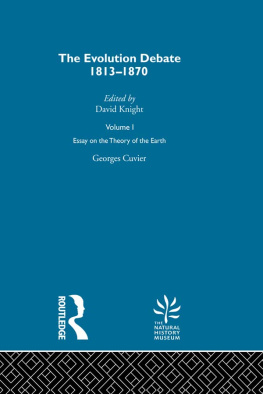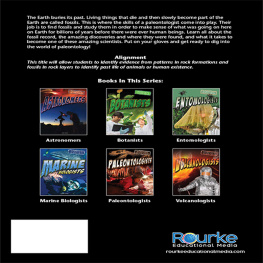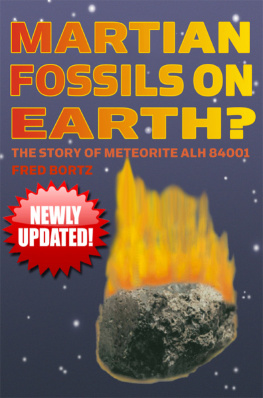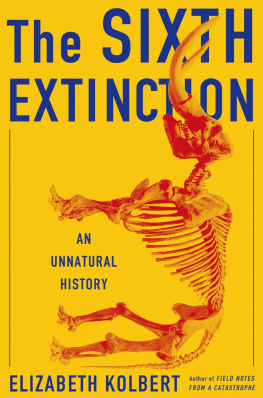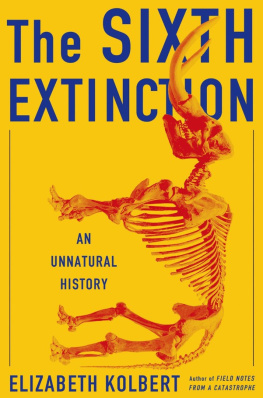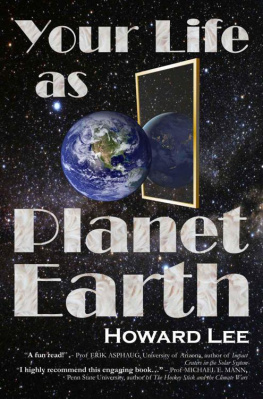Georges Cuvier
DISCOURSE
ON
THE REVOLUTIONARY UPHEAVALS
ON THE SURFACE OF THE GLOBE
AND ON THE CHANGES WHICH THEY HAVE PRODUCED
IN THE ANIMAL KINGDOM
Translated by
Ian Johnston
Vancouver Island University
Nanaimo, BC
Canada
Richer Resources Publications
Arlington, Virginia
USA
Cuvier
Discourse on the Revolutionary Upheavals on the Surface of the Earth
Copyright 2009 by Richer Resource Publications, LLC
All rights reserved
Cover Art by Georges Cuvier
No part of this book may be reproduced in whole or in part without express permission from the publisher except for brief excerpts in review
Reprint requests and requests for additional copies of this book should be addressed to
Richer Resources Publications
1926 N. Woodrow Street
Arlington, Virginia 22207
Or via our web site at
www.RicherResourcesPublications.com
ISBN 978-1-935238-81-2
Library of Congress Control Number: 2009938162
Published by Richer Resources Publications
Arlington, Virginia.
Printed in the United States of America.
Table of Contents
Examination of the Causes Which Are Still at Work Today
on the Surface of the Earth
The History of Peoples Confirms the Newness of the
Continents
The Excessive Antiquity Attributed to Certain People Has
No Historical Basis
The Astronomical Monuments Left by the Ancients Do
Not Bear the Excessively Distant Dates Which
People Believe They Have Seen in Them
The Zodiac Is Far From Carrying in Itself a Certain and
Excessively Ancient Date
General Conclusion Concerning the Time of the Latest
Revolution
A Summary of the Observations on the Successive
Formations
Appendix: Determination of the Birds Called Ibis by the
Ancient Egyptians
Introductory Note
Georges Cuvier (1769-1832) was a major scientific figure in the early 19th century, a brilliant and enormously influential naturalist in France and throughout Europe. His work on the comparative anatomy of living and fossil animals, especially vertebrates, was a major landmark in the history of modern biology. Cuvier was, like many other naturalists at the time, a staunch opponent of the theory of evolution, above all as that theory had been presented by his colleague Jean-Baptiste Lamarck in Philosophie zoologique (1809).
Cuviers Discourse on the Revolutions On the Surface of the Earth was originally (in a somewhat different form) the preface to his larger work Research into the Fossil Remains of Quadrupeds (published in 1812, 1821, and 1825). The Discourse was immediately popular and was later published as an independent work, went through several editions, and was translated into a number of different languages.
In the Discourse, Cuvier has at least three main purposes. First, he wishes to review the present state of knowledge in geology, paleontology, and comparative anatomy, particularly with a view to listing some of the many competing contemporary theories about the formation of the earth and to explaining why there is so much confusion. Second, he wants to demonstrate conclusively that the earths surface has undergone at least three major catastrophes (not simply one, as Biblical literalists were insisting), thus making the case for a scientific position known as catastrophism (changes have come about by a series of unique general upheavals, rather than by slow, constant processes or by local disasters). And finally he wishes to demonstrate, equally conclusively, that the last such catastrophe was fairly recent (a few thousand years ago at most) and thus that the present forms of human society are not nearly as ancient as many people have been claiming.
Cuviers opposition to the theory of evolution rests upon some important scientific claims. To begin with, he argues that there could have been no uninterrupted continuity in the development of life, because the sudden universal catastrophes, which brought about mass extinctions, cannot be explained in terms of present forces at work on the surface of the earth (hence, the claim of the uniformitarians, like Lamarck, that the history of the earths surface can be accounted for in terms of present forces constantly working at present rates, is simply wrong). Moreover, there is not sufficient time since the last catastrophe for the development of new species. In addition, his principle of the correlation of parts in organic beings (one of his most important contributions to anatomy) indicates that simple changes in particular organs would not assist an animal, which is a complex coordinated whole; hence, the minor organic transformations upon which evolution depends would lead to extinction rather than to new species. Also the fossil record provides insufficient evidence of transitional types, an essential requirement of evolutionary theory in Lamarck (and later in Darwin). Finally, on the basis of his wide experience with the organic structure of animals, Cuvier argues that there are naturally fixed limits to the variations within species, beyond which new varieties are not possible.
As Cuvier himself admits, his argument raises some significant questions of its own. For example: Why are there no human fossils? If there is no continuity between the extinct animals of past ages and present species, where were the latter species during the catastrophes? Where did our present species come from?
Cuviers objections to evolution, although set aside by Darwinian theory, have by no means been entirely dismissed (catastrophism, for example, has made something of a comeback in recent years), and many of his most important ideas have been incorporated into modern biology.
Cuviers argument in the Discourse is remarkable for its clarity, for its grasp of many different areas of science, and, perhaps more than anything else, for its astonishing range. His analysis takes into account, not merely the findings of many of his scientific contemporaries and his own remarkable research results, but also the often questionable evidence in ancient writings from widely different cultures, as well as the claims of ancient and modern astronomers about the significance of astronomy and astrology in arguments about the age of the earth. It would be difficult to find a modern scientific argument which involves such a detailed look at ancient books and monuments and at the commentaries upon them. These qualities make Cuviers argument an exceptionally interesting and accessible scientific work from the most vital era of pre-Darwinian biology, the first decades of the 19th century.
One factor of particular interest, too, is Cuviers use of evidence from the French expedition to Egypt in 1798 (particularly in his discussions of the zodiac and in his report on the ibis, included as an appendix to the Discourse). Although that campaign had ended in military failure in 1801, it produced an enormous wealth of scientific information of great interest and importance to those dealing with the history of the earth, the development of animal life, and the history of human societies. Much of this information was still being processed and catalogued and published in the first decades of the 19th century, as one can see from different editions of the Discourse (later editions, including the Third, which is the basis for the translated text here, draw much more upon the Egyptian material than did the first version).
The major publication prompted by this material from Egypt was called Description de lgypte, a series of volumes on ancient and modern Egypt produced by the 160 scholars who accompanied the military expedition and who shipped a great many valuable artifacts home (everything from mummified birds to temple ceilings). The first volume was published in 1810 and the last in 1829. Its full name was


